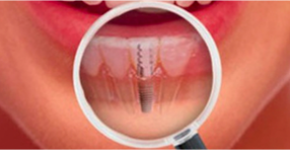
Digital radiography is one of the most important new advances that our profession has seen in quite some time. The capability to reduce the exposure of radiation to the patient while increasing our diagnostic proficiency has astounding implications. The reduction of the use of harsh chemicals and other waste materials associated with traditional radiography is also an added benefit to our environment.
Benefits of Digital Radiography
-
The film is immediately processed and available to view, whereas film takes time to be developed.
-
Less radiation needed to produce the same quality image as film (digital X-rays gives 70% less exposure to radiation than conventional X-rays).
-
You can enhance the digital image (such as alter brightness and contrast) with a series of processing techniques
-
Digital archiving—the ability to store images on a computer.
-
Digital radiography produces larger photos to better source hard-to-see cavities
-
Digital radiography, though expensive to buy initially, is cheaper and more environmentally friendly in the long run
Dental sealants
What are sealants?
Tooth sealant refers to a plastic that a dentist bonds into the grooves of the chewing surface of a tooth as a means of helping prevent the formation of tooth decay.
How do sealants work?
In many cases, it is nearly impossible for children to clean the tiny grooves between their teeth. When a sealant is applied, the surface of the tooth is somewhat flatter and smoother. There are no longer any places on the chewing part of the tooth that the bristles of a toothbrush can’t reach and clean. Since plaque can be removed more easily and effectively, there is much less chance that decay will start.
What is the life expectancy of tooth sealants?
The longevity of sealants varies. Sealants that have remained in place for three to five years would be considered successful, however, sealants can last much longer. It is not uncommon to see sealants placed during childhood still intact on the teeth of adults. Our office will check your child’s sealants during routine dental visits and will recommend repair or reapplication when necessary.
Which teeth should be sealed?
Any tooth that shows characteristics of developing decay should be sealed. The most common teeth for a dentist to seal are a child’s back teeth, and of these teeth, the molars are the most common teeth on which dental sealants are placed. The recommendation for sealants should be considered on a case-by-case basis.
